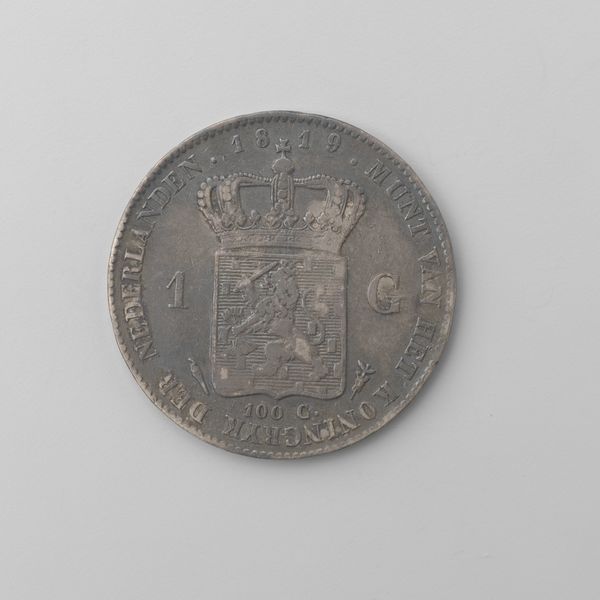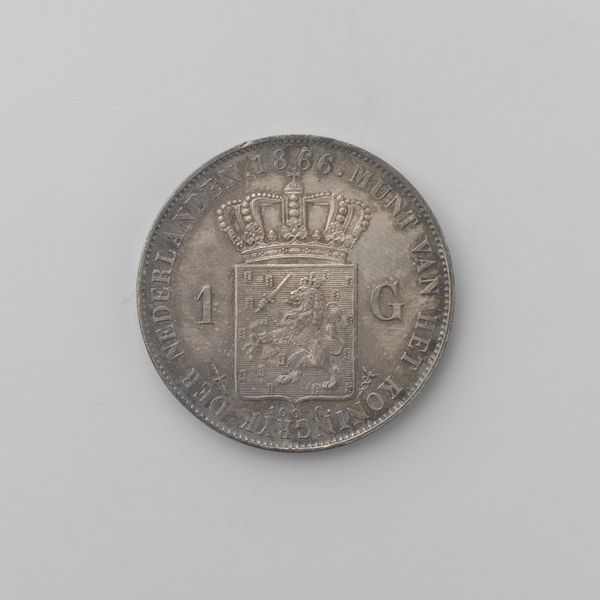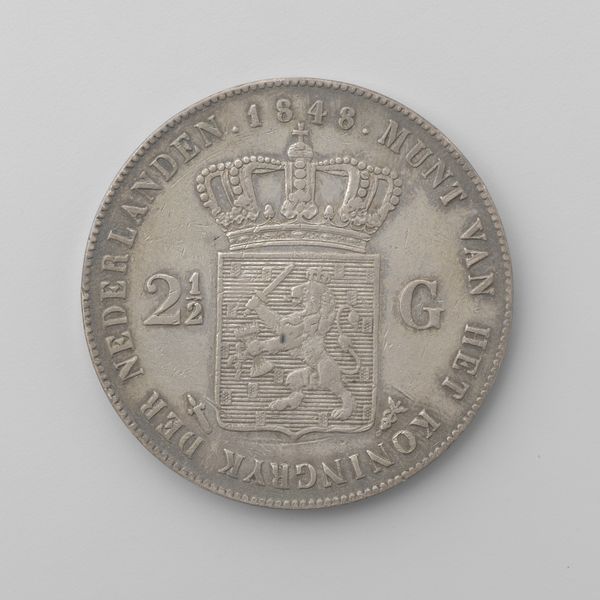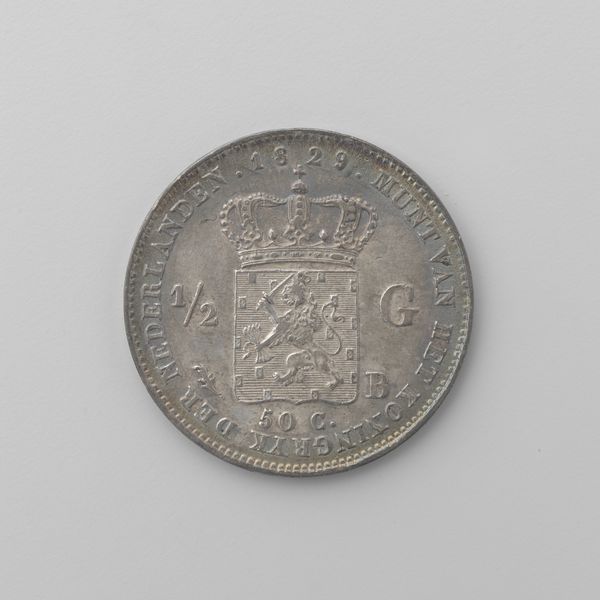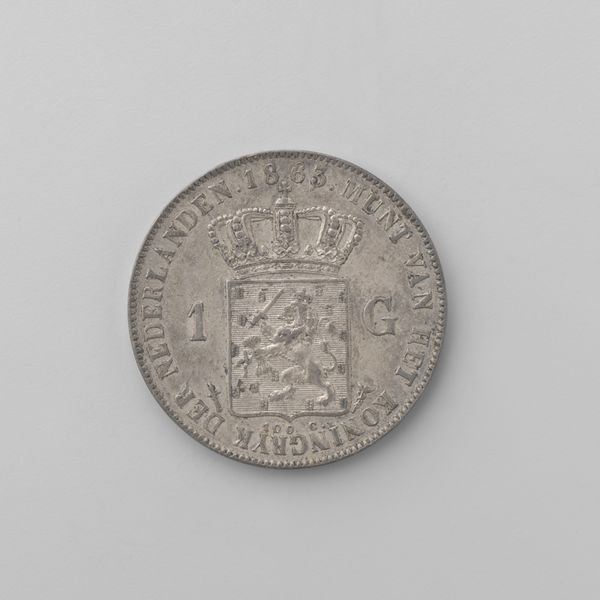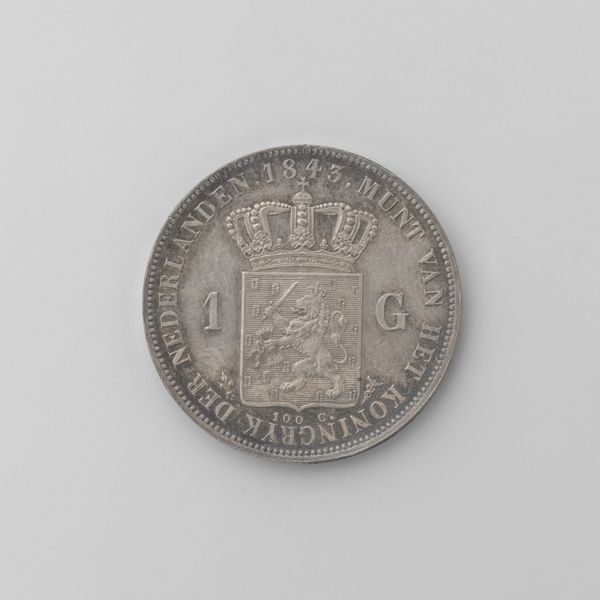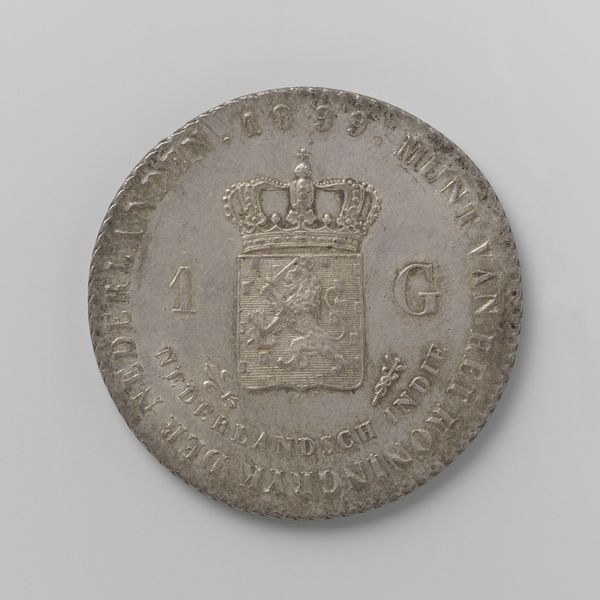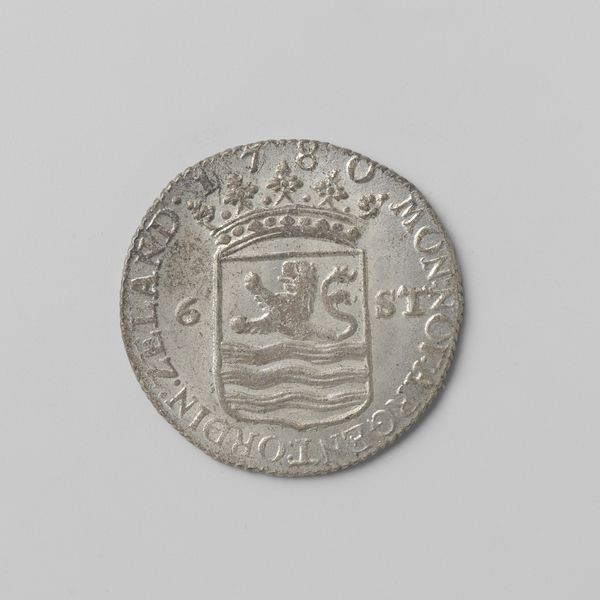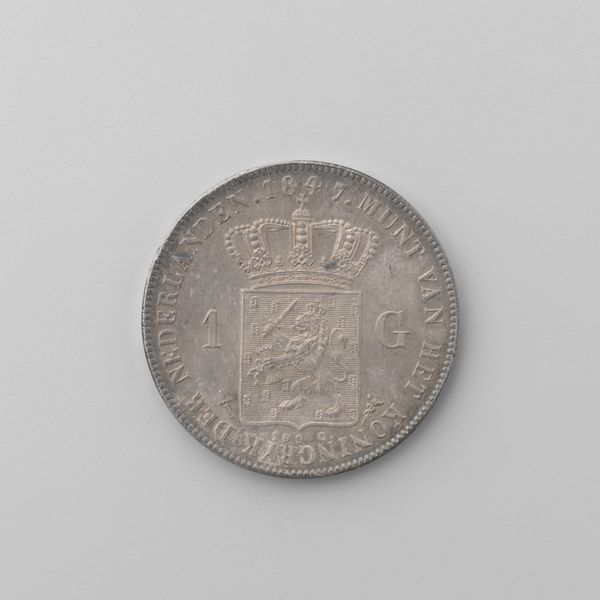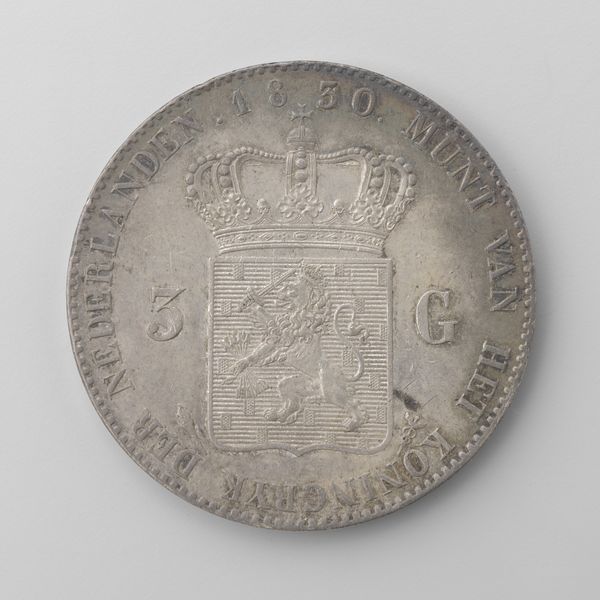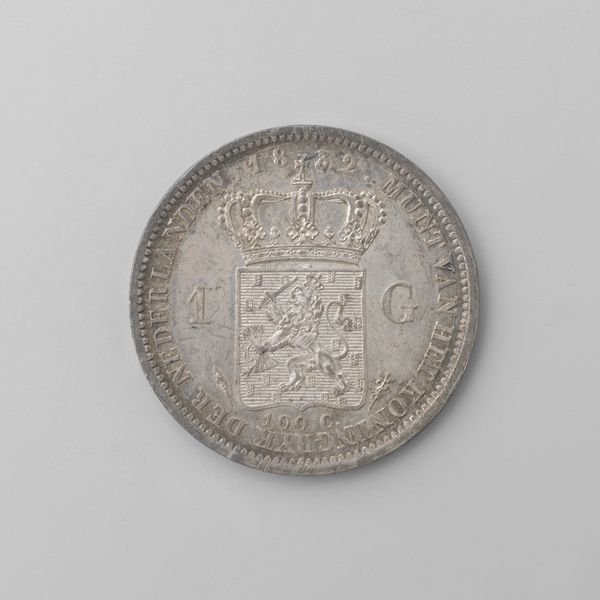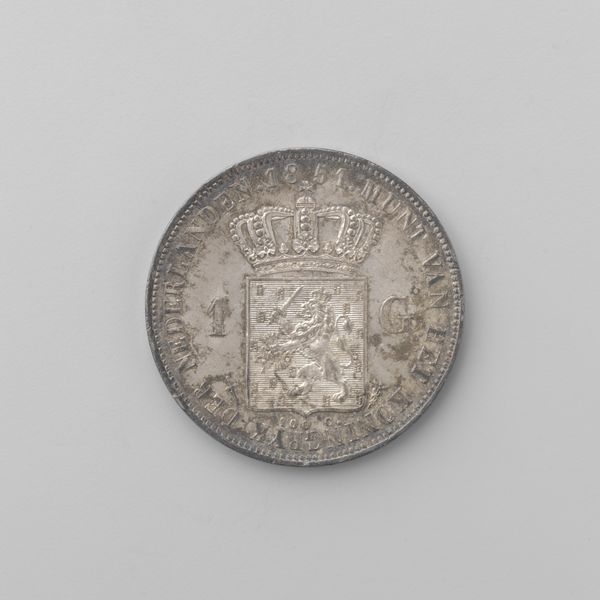
silver, print, embossing
#
neoclacissism
#
silver
# print
#
embossing
#
ancient-mediterranean
#
embossed
Dimensions: diameter 4.0 cm, weight 27.80 gr
Copyright: Rijks Museum: Open Domain
This is a Dutch silver ducat, minted in 1816 under the authority of King Willem I. Coins like this were made by die-striking: a design incised in hardened steel is pressed into a softer metal blank. Silver has been prized for millennia for its luster, resistance to corrosion, and malleability. But beyond these material properties, it's the coin's function as currency that gives it true significance. Consider the labor that this object represents. Not just that of the die cutter and mint worker, but all those whose efforts contributed to the wealth of the nation, measured and exchanged in these small tokens. The imagery on the coin, including the royal crest, served as a visual contract, guaranteeing the coin's value. But it also reflects the power of the monarchy and its connection to global trade. So, next time you encounter a coin, remember that it's more than just a piece of metal. It is a symbol of economic systems, labor, and the social order.
Comments
No comments
Be the first to comment and join the conversation on the ultimate creative platform.
